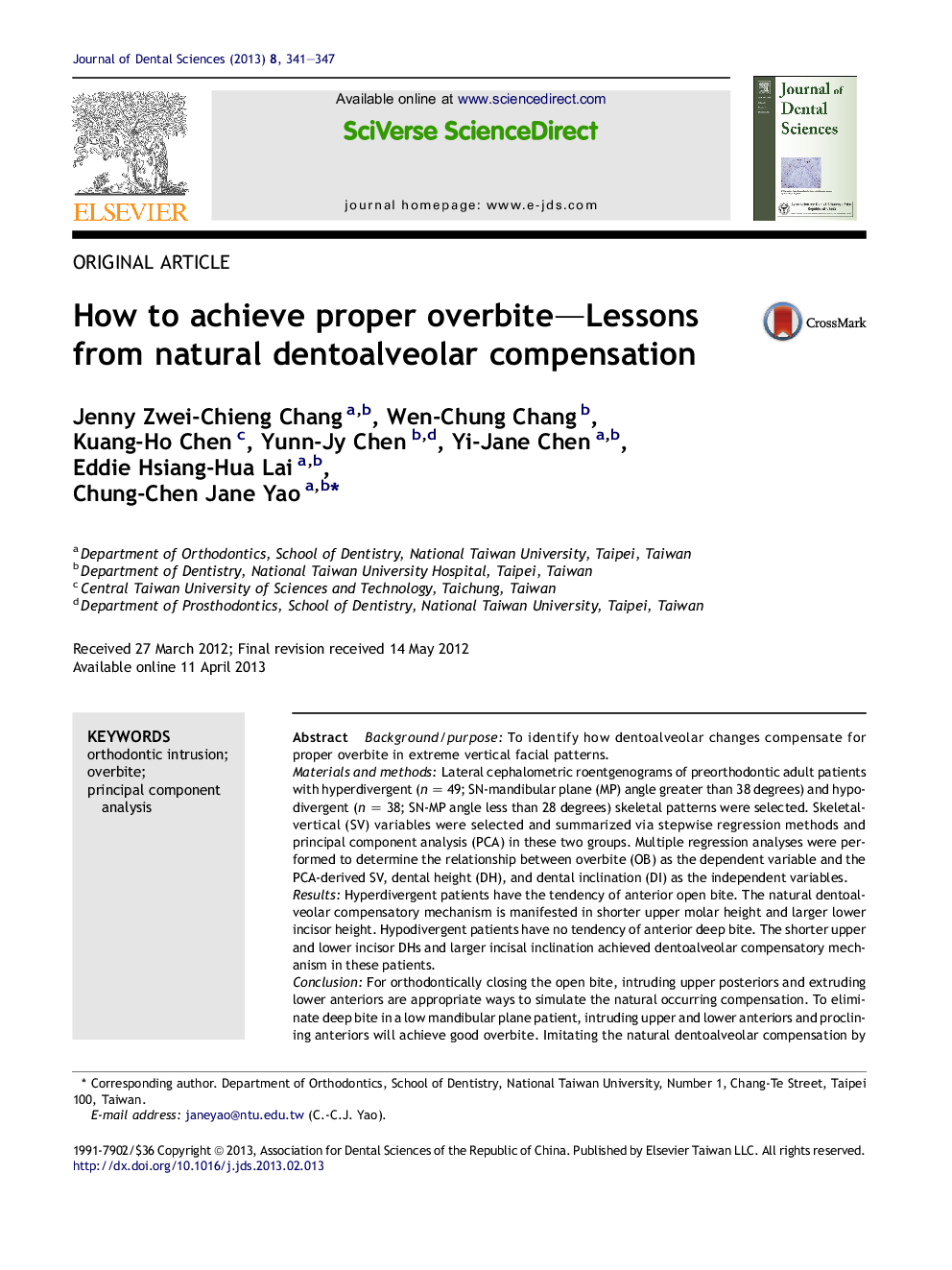| Article ID | Journal | Published Year | Pages | File Type |
|---|---|---|---|---|
| 3144594 | Journal of Dental Sciences | 2013 | 7 Pages |
Background/purposeTo identify how dentoalveolar changes compensate for proper overbite in extreme vertical facial patterns.Materials and methodsLateral cephalometric roentgenograms of preorthodontic adult patients with hyperdivergent (n = 49; SN-mandibular plane (MP) angle greater than 38 degrees) and hypodivergent (n = 38; SN-MP angle less than 28 degrees) skeletal patterns were selected. Skeletal-vertical (SV) variables were selected and summarized via stepwise regression methods and principal component analysis (PCA) in these two groups. Multiple regression analyses were performed to determine the relationship between overbite (OB) as the dependent variable and the PCA-derived SV, dental height (DH), and dental inclination (DI) as the independent variables.ResultsHyperdivergent patients have the tendency of anterior open bite. The natural dentoalveolar compensatory mechanism is manifested in shorter upper molar height and larger lower incisor height. Hypodivergent patients have no tendency of anterior deep bite. The shorter upper and lower incisor DHs and larger incisal inclination achieved dentoalveolar compensatory mechanism in these patients.ConclusionFor orthodontically closing the open bite, intruding upper posteriors and extruding lower anteriors are appropriate ways to simulate the natural occurring compensation. To eliminate deep bite in a low mandibular plane patient, intruding upper and lower anteriors and proclining anteriors will achieve good overbite. Imitating the natural dentoalveolar compensation by using temporary anchorage devices at appropriate sites for intruding teeth helps to resolve orthodontic vertical problems.
